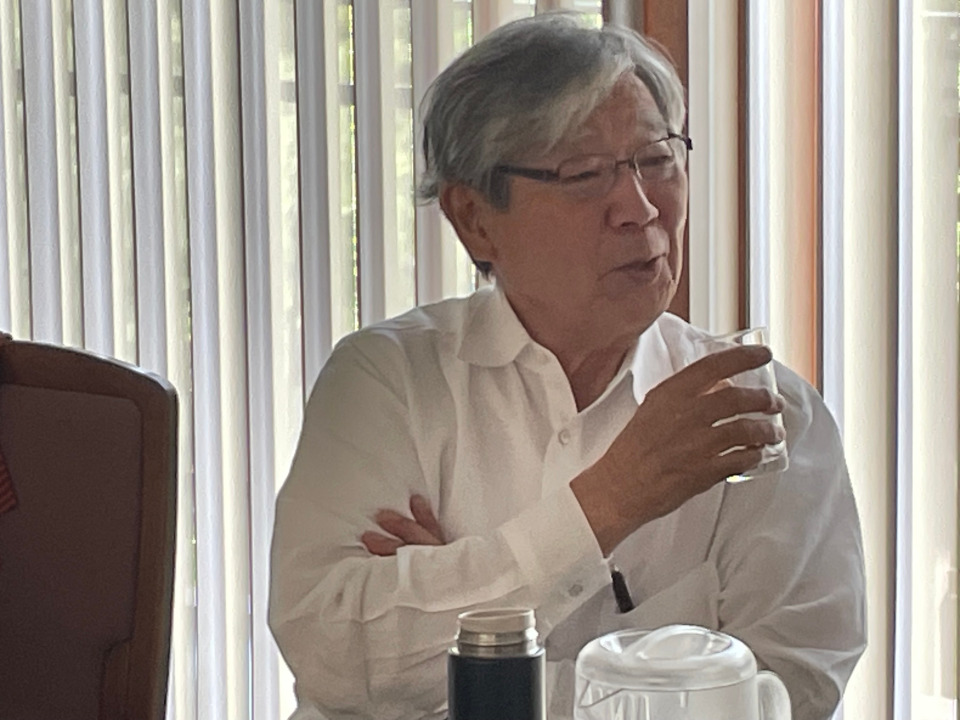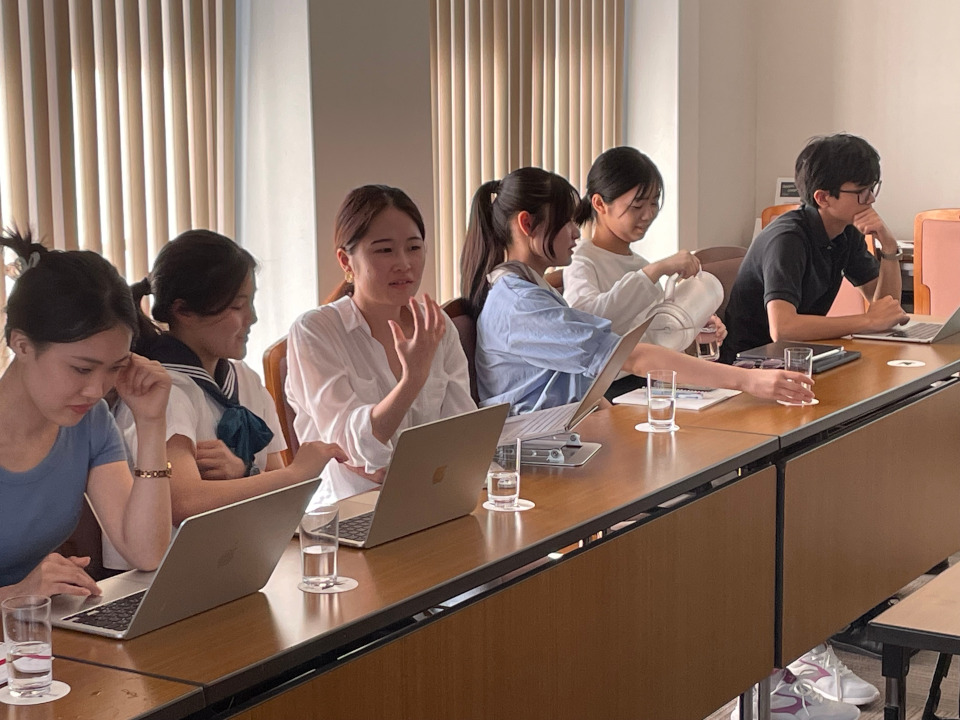- HOME
- Activities
- Forum List
- Forum Details
June 21st, 2025 KIP Forum "Rice Distribution 2040 Vision"

Lecturer: Mr.Ryo Kimura
Profile: Chairman of the Japan Rice and Rice Industry Export Promotion Association (JRE), and former Chairman of the National Federation of Rice Wholesalers’ Cooperative Associations (Zenbeihan). After graduating from the Faculty of Economics at Keio University, he joined Kitoku Shinryo Co., Ltd., a company founded in 1882. He has served as both President and Chairman of the company. Upon becoming Chairman, he also assumed the position of Chairman of the National Federation of Rice Wholesalers’ Cooperative Associations (Zenbeihan), the largest rice wholesaler organization in Japan. Since last year, he has been actively promoting the necessity of exporting rice and rice-related products. In 2023, he was awarded the Special Contribution Grand Prize for the Food Industry by THE JAPAN FOOD JOURNAL.
【Speech and Q&A】
The speech covered four main aspects: (1) the fundamentals of rice distribution, (2) the current situation on the production side, (3) the issue of rice shortages, and (4) future projections and countermeasures regarding the rice market. In section (1), we learned that rice distribution in Japan is highly complex, involving a multi-layered system. In section (2), the speaker elaborated on issues frequently featured in the media, such as the shortage of successors, the proliferation of small-scale farms, and the rise of abandoned farmland. Furthermore, the challenges of large-scale farming and the difficulties of sharing agricultural equipment to reduce costs were explained in detail. In section (3), the speaker challenged the government's explanation regarding rice shortages, suggesting instead that the actual volume of rice shipped may have been lower than reported. In section (4), the future contraction of the domestic rice market and the anticipated shortfall in domestic production were discussed. As a potential countermeasure, the speaker proposed simplifying the supply chain. During the Q&A session, I inquired about government-led rice production adjustments. The speaker offered insightful commentary on how the mismatch between actual demand and adjusted production volumes has led to market imbalances, which was particularly thought-provoking.
【Ground discussion】
Following the speech, a general discussion was held under the theme: "Should Japan promote rice imports and exports?" One interesting observation was that while most participants supported rice exports, opinions were divided nearly equally on the issue of imports. This divergence stemmed from concerns over the impact of trade on domestic production. It was pointed out that while exporting rice may serve as a way to explore new markets amid shrinking domestic demand, imports could accelerate the decline of Japan's domestic rice industry. The discussion then evolved into a central debate between two opposing views: on one hand, cautious opinions emphasized food security and the need to stabilize domestic production; on the other hand, proponents of expanded imports highlighted the importance of ensuring a stable supply of affordable rice. While the underlying axis of the debate—whether national interest should be defined as the protection of domestic industry or the assurance of inexpensive goods—was classical, the essential nature of food as a necessity for daily life made the discussion particularly layered and complex.
【Personal Opinion】
Overall, I was left with a strong impression that “the rice issue is extremely complex.” This complexity arises from several factors unique to the rice industry, such as its intricate distribution network, the multiplicity of stakeholders involved, and the so-called “iron triangle” surrounding production adjustments. Yet perhaps the most challenging aspect is that policymaking in this field inevitably involves value judgments. As I experienced during the general discussion, the policy outcomes diverge significantly depending on whether the priority is to preserve domestic production at all costs or to provide consumers with affordable food. Ideally, these two objectives should not be mutually exclusive. However, since securing affordable rice necessitates either the importation of inexpensive Japonica varieties or a price reduction in the domestic market—both of which exert pressure on domestic producers—these goals often end up in direct conflict. I will conclude this report by offering my own view. I believe that the primary goal of rice policy should be to ensure that rice remains affordable for the general public. This is because rice agriculture, as the nation's lifeline, has long enjoyed a privileged status under government protection, even as other industries have risen and declined. Of course, the most desirable scenario would be to achieve this affordability through domestic production as much as possible. However, in light of declining rice consumption and a shrinking domestic market under globalization, such expectations may be overly optimistic. Given the unlikelihood of a future where all citizens are deeply engaged with agriculture or consume only rice as their staple, a more realistic approach would be to ensure a stable supply of inexpensive rice through imports, while making every possible effort to reduce production costs and introduce new technologies. In doing so, we can aim for a soft landing of the rice industry. This, in my view, should be the guiding principle for 21st-century rice policy. Nevertheless, this remains but the humble opinion of one participant. I hope that those who read this report will engage with the arguments critically and help advance this profoundly difficult—but vitally important—national discussion.
Yugo Nagasawa, The University of Tokyo, Liberal Arts, 3rd year



